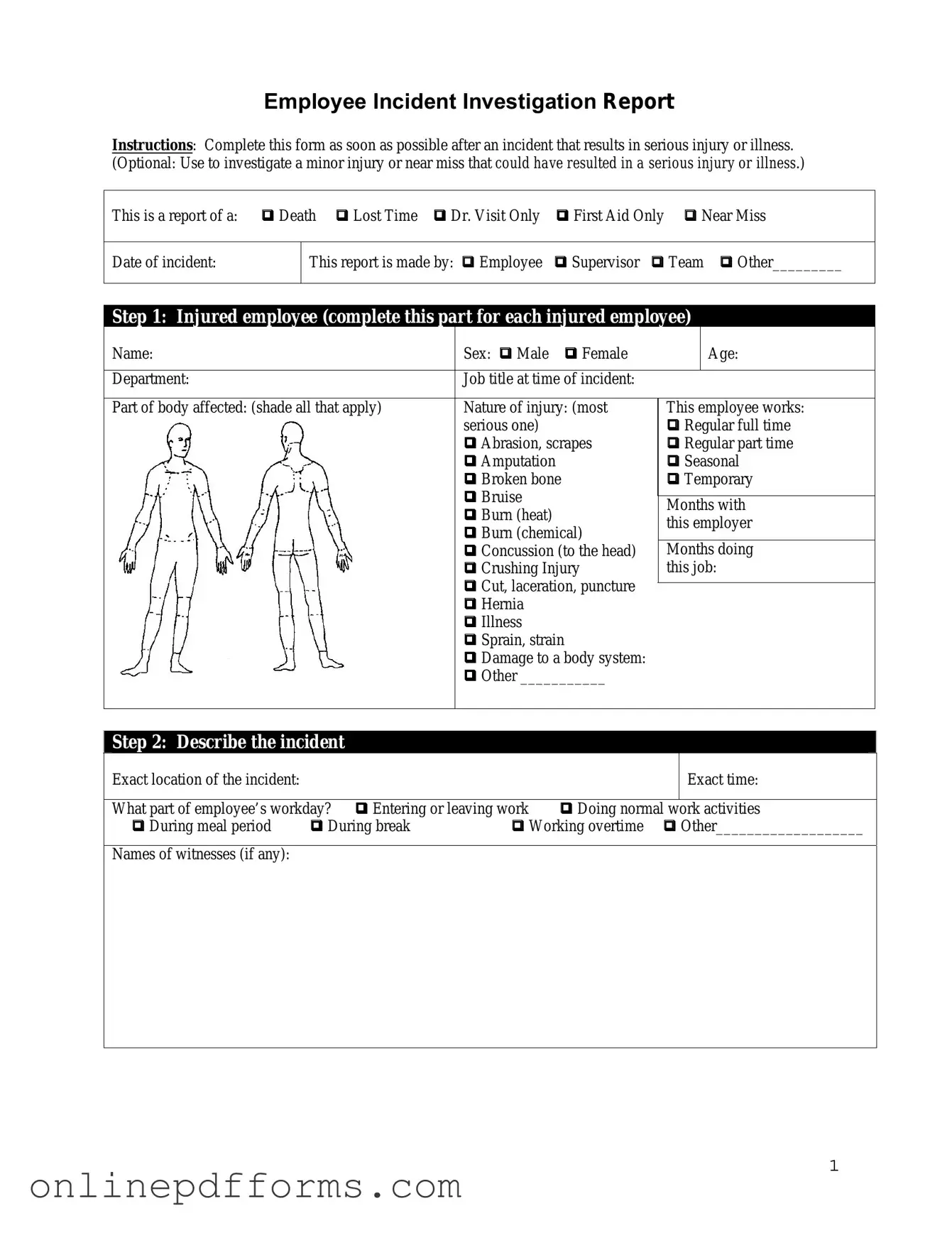The Employee Accident Report form shares similarities with the Incident Report form. Both documents are designed to capture details surrounding an unexpected event, whether it’s an accident or another type of incident. They typically include sections for describing the event, identifying involved parties, and documenting any witnesses. The goal of both forms is to provide a clear and factual account of what happened, which can be crucial for investigations and future prevention strategies.
Another document that resembles the Employee Accident Report is the Workers' Compensation Claim form. This form is used when an employee seeks compensation for injuries sustained while on the job. Like the accident report, it requires detailed information about the incident, including the nature of the injury and the circumstances leading to it. Both documents aim to ensure that the employee receives the necessary support and compensation for their injuries.
The Safety Incident Log is also similar in nature. This log serves as a record of all safety-related incidents within a workplace, including accidents. It helps organizations track patterns and identify areas that may need improvement. Both the Safety Incident Log and the Employee Accident Report emphasize the importance of documenting incidents to enhance workplace safety and compliance with regulations.
Understanding the importance of documentation in workplace safety, it is essential to also consider various forms such as the Arizona PDF Forms, which serve crucial roles in different contexts, ensuring that all necessary procedures and regulations are adhered to for a safer working environment.
The Near Miss Report is another document that aligns with the Employee Accident Report. A near miss refers to an incident that could have resulted in injury or damage but did not. This report captures the details of such events, allowing organizations to analyze potential risks and prevent future accidents. Both forms focus on understanding incidents to foster a safer work environment.
In addition, the First Aid Report is closely related. When an employee receives first aid for an injury, a report is often created to document the treatment provided. This report, like the Employee Accident Report, details the nature of the injury and the circumstances surrounding it. Both documents serve as important records for the employer and can be used in case of further medical claims or investigations.
The OSHA 300 Log also shares similarities. This log is required for certain employers to record work-related injuries and illnesses. It captures information about each incident, including the type of injury and the number of days away from work. Both the OSHA 300 Log and the Employee Accident Report aim to ensure compliance with safety regulations and promote workplace safety by tracking incidents effectively.
Lastly, the Return-to-Work Agreement is relevant in this context. While it focuses on the employee’s transition back to work after an injury, it often references the circumstances documented in the Employee Accident Report. Both documents work together to ensure that employees are supported throughout their recovery and that any necessary accommodations are made to facilitate a safe return to the workplace.
